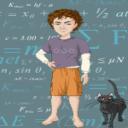Yahoo Answers is shutting down on May 4th, 2021 (Eastern Time) and the Yahoo Answers website is now in read-only mode. There will be no changes to other Yahoo properties or services, or your Yahoo account. You can find more information about the Yahoo Answers shutdown and how to download your data on this help page.
Trending News
Why do supernovas in other galaxies appear as big dots?
For example in these images.
http://www.eso.org/public/archives/images/screen/e...
http://www.dailygalaxy.com/.a/6a00d8341bf7f753ef01...
I understand how they can briefly outshine their entire parent galaxy, but shouldn't they still be a small, incredibly bright dot? How do they span a significant angular area in the sky as compared to other stars in their galaxy? I don't think the expanding gas can spread out that quickly after the event. Is it some artifact of the method of photography, rather than the object actually spanning that much space?
So why is a supernova stretched more by the PSF than a star? Is it because it has intrinsic brightness enough to expose the film (/ CCD) even far into the tails of the PSF?
3 Answers
- orpheus_swordLv 58 years agoFavorite Answer
So, Lodar and Geoff gave you good answers, but that's only part of the story. Yes, the CCD will have a blooming effect, but professional-grade detectors are designed to minimize this effect. However, there's a more insidious effect at play that neither Lodar or Geoff mentioned. Since light propagates as a wave, it is subject to various properties of waves, namely diffraction. Since the telescope as a finite aperture (ie. the primary mirror has a finite size), then the telescope will have a finite resolution. This means that every object you image with the detector will be effectively blurred, by what professionals call the "point-spread function" or PSF. The PSF is a fundamental limitation of the telescope and instrument combination, and there is nothing --- that needs repeating --- *NOTHING* you can do to overcome it. Sure, there are deconvolution algorithms, but these never give an exact result nor are they guaranteed to work, and so are rarely (if ever) used in professional astronomy for anything other than making pretty pictures. But back to the PSF blurring. What this means for you, is that physically the telescope is convolving the *INTRINSIC* image with the PSF. As you noted, the image *ought* to be a point --- that is the INTRINSIC image. But since the PSF has a finite size (deriving from the finite size of the primary aperture), the observed image will have a " big dot". In professional circles, the image of a point-source is just the point-spread function. So, what you've essentially noticed, is that the point-spread function for these images has a finite size.
As an additional aside. Images taken from space (such as the Hubble Space Telescope) are as we say "diffraction limited" --- meaning the size of the PSF is set by the fundamental laws of optics (namely the Rayleigh criterion --- look it up). From the ground, the images are often "seeing" limited. Meaning the random motions of the air above the telescope set the size/shape of the PSF. Roughly speaking (in the optical), the PSF of the Hubble is about 10 times narrower than from the ground --- which is why HST images look, well, pretty awesome.
- 8 years ago
The problem is that a photograph can only show a certain amount of brightness: basically the white of the paper it's printed on. So in order to represent brightness, a bright dot will appear larger instead. This is actually caused by the brightness bleeding into the surrounding pixels, similar to how the rods in the eyes are overloaded by a bright light.
And in actuality, if the true sizes of stars were accurately represented in photographs, you wouldn't see any at all. Not even the nearest ones to Earth, because they have almost zero angular diameter.
- ?Lv 78 years ago
That is simply an effect of the camera used. Its technical term is "blooming," at least for a digital CCD. The supernova itself is a brilliant _point_ of light, which spreads in the camera detector. Incidentally, that second star is probably a nearby star in our own galaxy, not a supernova in the background galaxy (Andromeda Galaxy).





